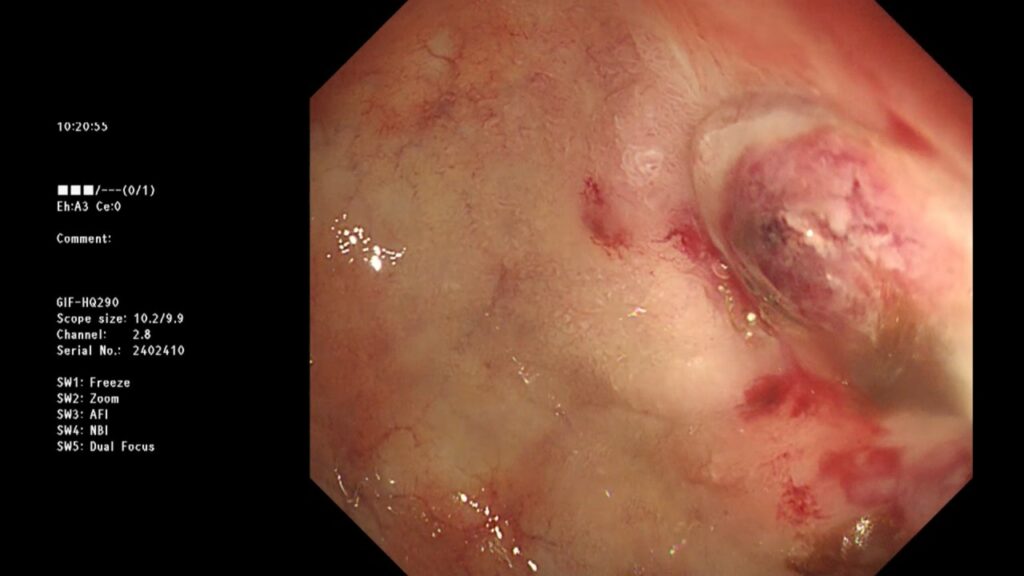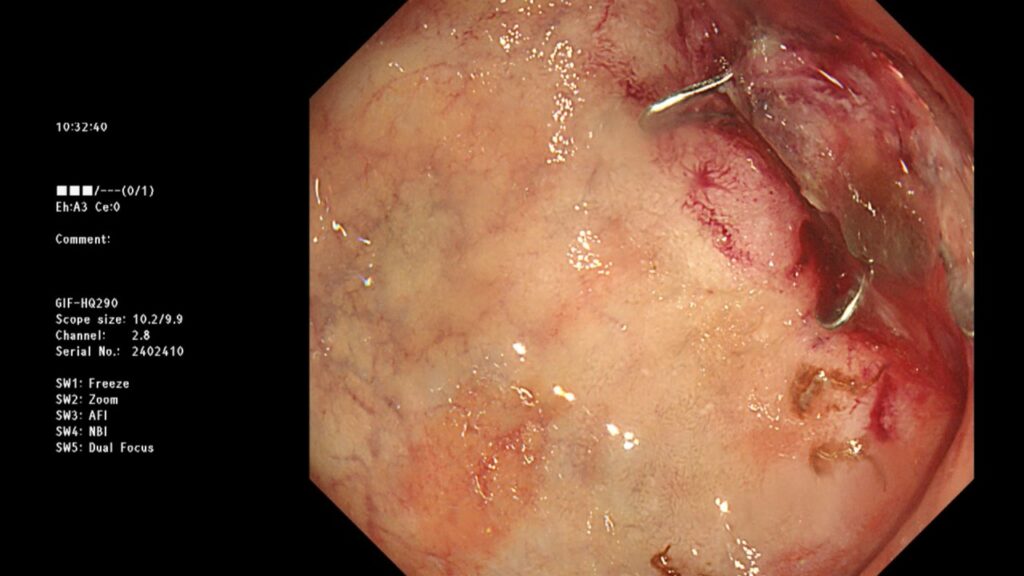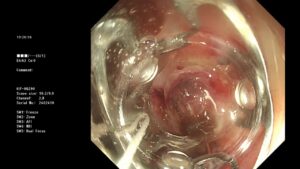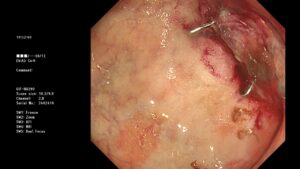CUHK
News Centre
CUHK finds over-the-scope clips are more effective than standard treatment for patients with non-variceal upper gastrointestinal bleeding
A randomised controlled trial conducted by The Chinese University of Hong Kong (CUHK)’s Faculty of Medicine (CU Medicine), with researchers from Hong Kong, mainland China and Australia, found that over-the-scope clips (OTSCs) as an initial treatment may be better than the standard treatment at reducing the risk of further bleeding in adults with acute non-variceal upper gastrointestinal bleeding.
The researchers found that the 30-day probability for bleeding in the standard treatment group was 14%, while that for the OTSC group was 3%. They advocate the primary use of OTSCs in the treatment of ulcers predicted to fail standard endoscopic treatment. The study results have been published in the renowned journal Annals of Internal Medicine.
Failure rate for standard treatment approaches 10%
Upper gastrointestinal bleeding is one of the most common medical emergencies, with an annual incidence of approximately 130 per 100,000 adults in Hong Kong. Symptoms include haematemesis, melena or both. Patients need endoscopy for haemostatic treatment; the current standard includes haemoclips or contact thermal devices. However, the failure rate with either method approaches 10% and further bleeding after endoscopic haemostasis increases mortality.
OTSC is an emerging option for endoscopic haemostasis. They are memory-shaped clips that are cap mounted onto the end of an endoscope, used in the endoscopic closure of full-thickness mucosal defects and haemostasis. When deployed, the clip provides firm compression of a bleeding vessel, with a high retention rate, preventing recurrent bleeding from clips being dislodged. OTSCs are mostly used in severe and refractory bleeding from non-variceal causes.
The probability of 30-day further bleeding was lower in the group using OTSCs
In the current study, 190 adult patients with active bleeding or a non-bleeding visible vessel from a non-variceal cause on gastrointestinal endoscopy were randomly assigned to either the standard treatment group or the OTSC group. These patients were from seven university hospitals in Hong Kong, mainland China and Australia, with a large proportion of them being treated at Hong Kong’s Prince of Wales Hospital.
It found that the cumulative probability of 30-day further bleeding was 14% (14 of 97) in the standard treatment group and 3% (3 of 93) in the OTSC group. This suggests that the use of OTSCs as a first treatment may be better than the standard treatment in preventing further bleeds from ulcers and other non-variceal lesions.
“We should, however, be cautious in recommending the use of OTSC as the first treatment,” said Professor James Lau, corresponding author of the study, Yao Ling Sun Professor of Surgery and the Chairman of the Department of Surgery at CU Medicine. “OTSCs are costly, and the procedure time will increase as it involves scope withdrawal, clip mounting and scope reinsertion. Endoscopists also require training before using OTSCs. Therefore, we think that the primary use of OTSCs may be in the treatment of ulcers predicted to fail standard endoscopic treatment.”
An accompanying editorial by Professor Alan Barkun and colleagues from McGill University Health Centre in Canada supports the authors’ conclusion. It states that OTSCs should be reserved for patients with lesions who are at high risk of failure with standard treatments. This includes bleeding from ulcers exceeding 2 cm or located high in the gastric lesser curvature or posterior duodenal bulb.
The study details can be found at https://annals.org/aim/article/doi/10.7326/M22-1783.









